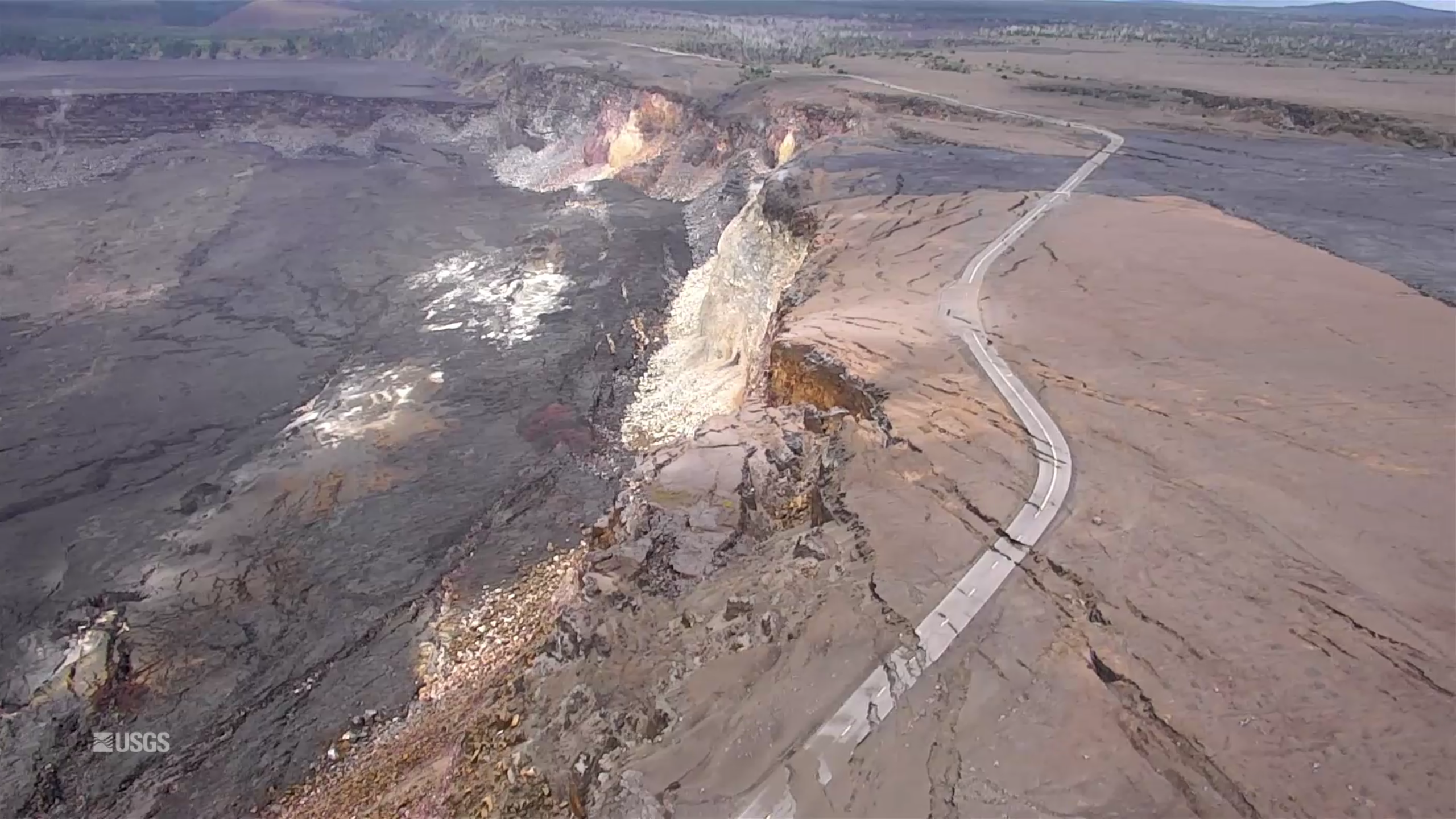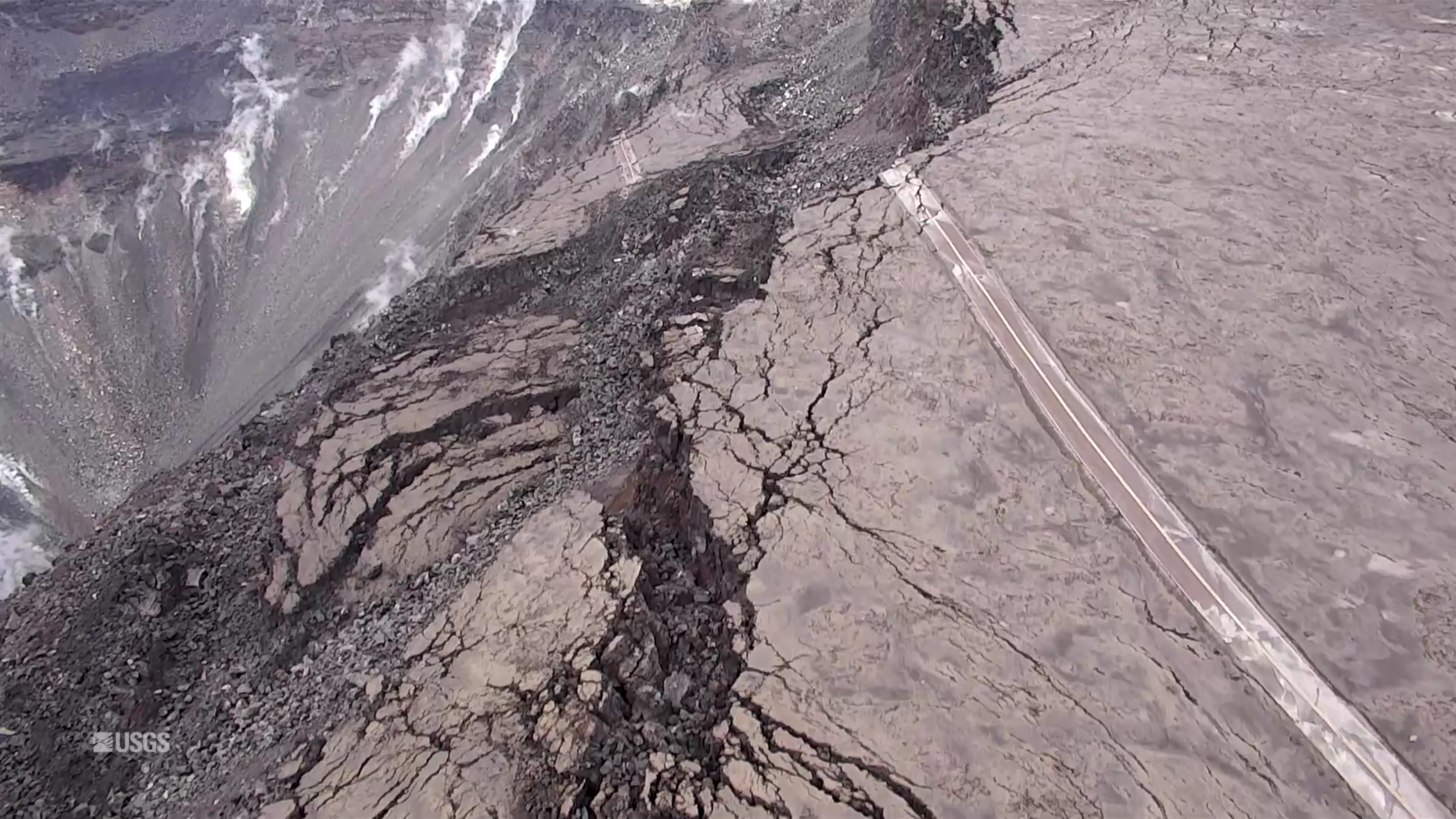Saturday, Sep 1, 2018, 6:00 pm – Kilauea's lower east rift zone overflight: Another angle of fissure 8, with a small lava pond within.
Posted by Extreme Exposure Fine Art Gallery on Sunday, September 2, 2018
This Week’s Eruption Summary
While no glow or incandescence was reported within Fissure 8’s cone for most of the week, Saturday 9/1 showed a few life signs remain in the LERZ: weak spattering from one spot, and in the evening new lava came out to cover most of the crater floor. But its sides have been slumping and falling in, as have the levees of the now solidified lava channel. While Fissure 8 and some of the surrounding vents continue to steam and fume, SO2 emissions remain low there and at the summit.

No active ocean entries have been seen for the past few days, suggesting that all the residual lava from Fissure 8 has stagnated or drained out.

This week has been a time of repair and taking stock. USGS geologists have been replacing lost or damaged monitoring stations (including the UWE tiltmeter, back on HVO’s deformation page). The drone crews have been out after Hurricane Lane came through to take new detailed aerial surveys of Kilauea’s summit (August 30 video) and Fissure 8 (August 21 video).

They also posted an updated timelapse video of HVO’s panorama cam of Halema’uma’u from April 14 through August 20:
Time-lapse video captures dramatic changes at #Kilauea Volcano's summit April 14 to August 20, 2018. At present, seismicity and ground deformation are negligible. https://t.co/tZott5ZBgM pic.twitter.com/mlWUbtqC9s
— USGS Volcanoes🌋 (@USGSVolcanoes) August 28, 2018
This week’s Volcano Watch newsletter from HVO describes how “Scientific community lends a hand to measure Kīlauea’s changing shape.” This eruption required all hands on deck and every last scrap of equipment they had, and then some.
Another screencap from the August 30 drone survey of Halema’uma’u Crater and its surroundings. Piece of Crater Rim Drive a long way down in the crater.More photos after the cut, plus some notes on the park’s status.
Continue reading September 2: A Few Signs of Life Deep in Fissure 8

